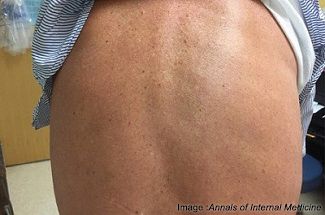Zika Virus: One Patient's Journey from Infection to Recovery
When a 55-year-old Massachusetts resident returned from a trip to Costa Rica, he developed clinical symptoms that all pointed to Zika.
When a 55-year-old Massachusetts resident returned from a trip to Costa Rica, he developed clinical symptoms that all pointed to Zika.
The previously healthy male traveled to Costa Rica (one of the countries with active Zika transmission) with two family members from December 19 to 26 of 2015. The patient began to experience fever and myalgia (muscle pain) on December 30, followed by a red rash on his arms and torso. He also had a headache, redness of the face and eyes, and arthralgia (joint pain), as described in a case report in the Annals of Internal Medicine.
On January 2 to 3, he went to a medical clinic in Cambridge with a rash, conjunctivitis (red eyes), and more joint pain. The patient revealed that he had many mosquito bites during his stay in Nosara, on the northwestern coast of the Costa Rica.
Medical examination determined he had conjunctival inject (non-specific red eye) and maculopapular rash. Testing confirmed that he had leukopenia (reduced white cells), lymphopenia (low level of lymphocytes in the blood), and bandemia (excess immature white blood cells). Malaria and Streptococcus bacteria (which causes strep throat) were both ruled out; and two weeks later, tests for IgM and IgG antibodies verified that the patient didn’t have dengue or chikungunya — both mosquito-borne illnesses.
So what was going on here?
The patient’s faint residual erythematous maculopapular rash on the torso.

Well, the patient was referred to a hospital for further evaluation on January 7 (nine days into the illness). He didn’t have a fever at this point, but a backache, nonpurulent conjunctivitis, and rash on his face and torso persisted. At this point, tests used for the Zika and dengue viruses — enzyme-linked immunosorbent assay for IgM antibodies and plaque reduction neutralization antibody – were done by the Centers for Disease Control and Prevention (CDC) in Colorado.
The Zika virus was suspected in the patient, but there’s no specific treatment or vaccine for the disease. The CDC recommends plenty of rest and fluids, as well as acetaminophen, not aspirin, for fever and pain.
By the time the patient was seen again on January 25, he had completely recovered from illness. It wasn’t until the next day that he finally received a diagnosis: Zika. Fortunately, both of his family members that he traveled to Costa Rica with remained healthy.
The current Zika virus outbreak has active transmission 30 countries and regions, according to the CDC:
- The Americas: Barbados, Bolivia, Brazil, Colombia, Costa Rica, Curacao, Dominican Republic, Ecuador, El Salvador, French Guiana, Guadeloupe, Guatemala, Guyana, Haiti, Honduras, Jamaica, Martinique, Mexico, Nicaragua, Panama, Paraguay, Puerto Rico, Saint Martin, Suriname, US Virgin Islands, and Venezuela
- Oceania/Pacific Islands: American Samoa, Samoa, and Tonga
- Africa: Cape Verde
